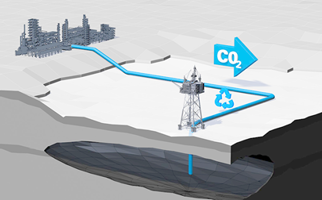
The Oil and Gas Authority (OGA) has published a comprehensive lessons learned document to help encourage oil and gas operators to use polymer technology to enhance oil recovery (EOR) from UK oil fields.
“Polymer Enhanced Oil Recovery – Industry Lessons Learned” was produced in collaboration with the EOR joint industry task group and seeks to share lessons to help industry understand the potential benefits and complexities of implementing the technology.
This work follows on from the OGA’s EOR Strategy and Delivery Programme, published last year, which set a target of 250 million barrels of incremental reserves to be gained from EOR.
Data gathered from the OGA’s 2016 Stewardship Survey show that there are six fields where there are plans to implement polymer EOR, potentially delivering some 194 million barrels of incremental reserves. This represents an incremental recovery factor of 5%.
These projects include the Chevron-operated Captain EOR in the Outer Moray Firth and BP-operated Quad 204 development in the Atlantic Margin. Both examples offer a rich source of lessons for other operators looking to frame and execute activity in polymer EOR.
The publication comes alongside news that Chevron has announced it has sanctioned the Final Investment Decision (FID) to proceed with the first phase of the Captain EOR project.
OGA Area Manager Eric Marston said: “Polymer EOR has the potential to increase recovery, extend field life and stimulate field redevelopments; so I’m very pleased to see the Captain EOR project move forward, helping maximise recovery from this field. Chevron, along with BP, Shell and Statoil, have been a driving force behind the industry-led EOR task force. I commend their openness in sharing their lessons learned with the wider industry and their contribution to the OGA’s ‘Polymer Enhanced Oil Recovery – Industry Lessons Learned’ publication.”
Greta Lydecker, managing director, Chevron Upstream Europe, said: “EOR is not yet commonplace on the UKCS, but the publication of the EOR task group’s “Polymer Enhanced Oil Recovery – Industry Lessons Learned” aims to help change this. Supported by the OGA’s Asset Stewardship Task Force, Chevron, BP, Shell and Statoil have shared their own experiences of developing EOR projects and the benefits this can bring to significantly increase the volume of recovery, extend field life, support employment in the supply chain, stimulate field redevelopments, defer decommissioning activities and ultimately support maximising economic recovery.”


